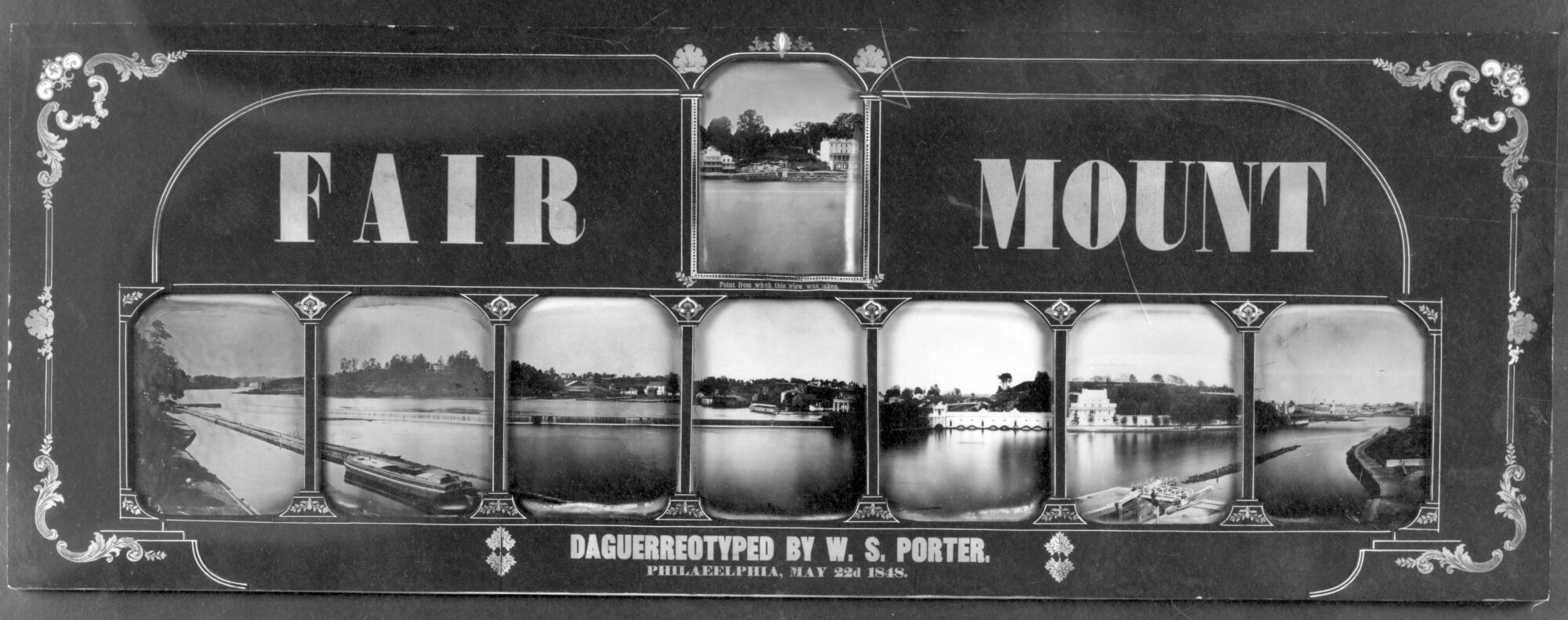Daguerreotype views of the east bank of the Schuylkill River from the Wire Bridge to Lemon Hill

This series of eight daguerreotypes of the Fairmount Water Works and vicinity is probably the earliest photographic view of this area. Of particular interest is the stretch of shoreline on the east bank of the Schuylkill River between Lemon Hill on the left and the Water Works on the right. Now home to the picturesque boathouses of the various Schuylkill Navy rowing clubs, this area was then the site of a conglomeration of institutional and industrial buildings known as the Flatiron. All the buildings shown here were demolished after this area became part of Fairmount Park.
On the far right is the Wire Bridge, designed by Charles Ellet Jr., and behind that buiildings in the city are visible. The image presented below is much lower resolution than the originals; a hint of the details discernible in these pictures can be seen in the banner at the top of this page, which clearly shows the Wire Bridge and the buildings beyond.
The daguerreotypes were made by a man named William Southgate Porter on May 22, 1848, thirteen years after the first-ever rowing regatta on the Schuylkill. At the time, James K. Polk was the President of the U.S. The Mexican-American War had only recently ended, on February 2. The first shots of the Civil War wouldn’t be fired for another thirteen years; Abraham Lincoln, not yet 40, was a freshman in the U.S. House of Representatives. And, thanks to William Porter, we know it was calm on the Schuylkill that day.
While the background of the panorama is more or less accurate, the curving of the foreground is exaggerated, as it is in some modern wide-angle views. Besides the view of the east bank, the panaroma managed to capture some details on the west bank: a canal boat in the entrance to the Fairmount Lock of the Schuylkill Navigation, in the foreground of the two left-most images; and the exit from the lock, on the right. The eighth view, set on top of the others, shows “the point from which this view was taken,” on the west side of the river, slightly downstream of the lock tender’s house.
The original daguerreotypes are part of the collection of the George Eastman Museum in Rochester, New York, which has graciously allowed us to reproduce them here. You can view the catalogue page for these images here. Contact the museum for high-resolution copies. Another panaromic view by Porter, made the same year along the Ohio River across from Cincinnati, can be found here.

And finally, above is a similar view of the Fairmount Water Works, done around the same time, by brothers Thomas P. and David C. Collins. It’s hard to know which of these paroramas came first. They are so similar that it seems like one of them might have been copying the other. What I do know is that the Porter images are much better preserved, and much sharper; or it may be only that I have better reproductions of them. If I can get permission to post high-resolution reproductions of either of these, I will update this post in the future.